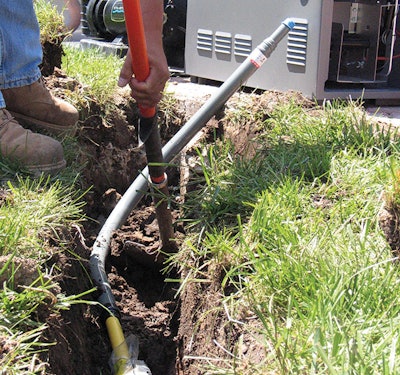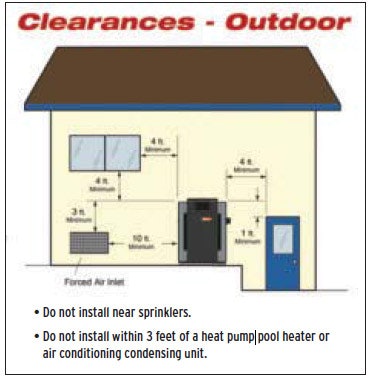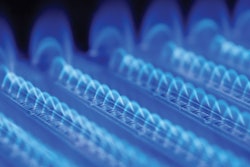
Gas-fired pool heaters are a great way to improve comfort, lengthen the swim season and drive a backyard pool’s return on investment. But poor installation and water care failures can reverse that benign effect by shortening the lifespan of the unit, leaving that same homeowner thinking about expensive early replacement costs — which is a loss for the whole industry.
Good performance and a long and productive heater life begin with sensible installation of the unit. And that requires the installer to take a moment to consider the environment the heater will experience — both on the day of installation and throughout the pool season.
It also demands a moment of reflection: This is a device that uses fuel and electricity to produce fire, by-products of which are poisonous fumes that can injure and kill if not safely routed away from humans and dispersed.
Only last summer, tragedy struck at a Best Western Hotel in Boone, N.C., when carbon monoxide leaking from a gas-fired swimming pool heater fatally poisoned three people. The flue from the pool heater was located in a crawlspace adjacent to a hotel room where guests were staying, and was installed without proper concern for its potential hazard, to say the least. According to investigators, the flue pipe was full of holes and propped up with a VHS cassette tape and a hotel ice bucket.
The case is still pending, but initial investigation points to a business owner that was hoping to save some money with an install by inexperienced technicians, an all-too-common situation.
Do-it-yourselfers can slip-up with other equipment and the price may only be monetary, but a blunder with a gas-fired heater can cost much more.
“Often pool heaters aren’t taken as seriously as domestic water heaters are, because they’re for pools, and pools are fun. Because it’s used for a recreational product, it’s taken less seriously, and that’s a mistake,” says Eric Gabrielson, Raypak Inc., Oxnard, Calif. “Internet sales being what they are now, people can actually get these things online and do with them what they wish.”
In short, gas-fired pool heaters should be treated with respect and installed by people who know exactly what they’re doing. Over the years, Gabrielson has seen his share of outlandish installations, with heaters stashed in bizarre locations without regard to their need to breathe in air and release hot fumes.
“One time we were called out by the insurance company to replace pool equipment burned up in a fire,” he says. “The homeowner bought a heater and put it in his garage, and that installation had eventually caused a fire that burned the place down.
“We were out there replacing things, and the guy actually got in an argument with us. He didn’t like the placement of the new heater — thought it was an eyesore. And we said, ‘Look, you had your shot at heater placement and installation, and you burned down your garage.’”
Installation and maintenance of gas pool heaters is a specialty, which requires training and experience. Still, knowledge of the basics can allow a pool professional to spot hazards and situations that may cost a homeowner at least the price of a new heater, and maybe more.
Leaking Gas
Installation concerns change depending on whether the unit is located indoors or outdoors. If a heater has been placed next to the house, horizontal and vertical clearances to things like windows and doors and air conditioning inlets are paramount. For instance, you don’t want to put a gas heater directly under a window, as the fumes can be sucked straight in to the living area.
You just have to think about where your exhaust gases are going, Gabrielson says. “Some people will want to hide the heater under a deck, for instance, not thinking about those exhaust gases coming up onto the deck where they can make people sick.”
The National Fuel Gas Code Committee (NFGC), American Gas Association (AGA) and Canadian Standards Association (CSA) publish guides for safe clearances for both outdoor units and vents from indoor installations.
The vent pipe of an indoor installation is a particular focus, as it carries the noxious gases. A common hazard with vent pipes in indoor installations develops when the hot exhaust gases cool and condense before they are released to the atmosphere. The liquid condensate contains corrosive chemicals — products of the combustion reaction — and this pernicious substance will drip down the vent pipe, eating at the metal as it goes. Eventually this acidic condensate can chew a hole in the vent pipe, which can lead to exhaust gas leakage into the room. This phenomenon is often quite easy to see at a glance; it looks exactly like what it is, acidic liquid (usually dried) on the outside of the flue pipe, discoloring its surface.
Often, it’s an improvising installer that sets the stage for this predicament, Gabrielson says. “You have a diameter specified by the manufacturer for a flue pipe. But on the install, they’ll decide to change that diameter. They’re adapting it to a vent. Or they want to put the exhaust up an existing fireplace or masonry chimney.
“But the heat in the gas is what causes it to rise. And if the diameter of the pipe increases or decreases from the correct size, the gas can cool and condense, and that’s what starts the problem.”
Exhaust is a major concern for pool heater installation, but so is the air coming into the unit. Especially outdoor installations in areas of high wind, Gabrielson says. “If it’s a high-wind situation near a body of water, which is very common, or if the house is catching the wind and channeling it toward the unit, that can cause performance issues.
“You just have to look at the conditions the unit is going to see, and not just at the time you’re installing the unit, but throughout the season. Those conditions may change through the day or throughout the swim season. You have to be open to that.”

If the unit is in a breezy location, sometimes a wooden fence can be used as a block — just make sure it rises a couple of feet higher than the top of the heater.
Aggro Water
Even a heater that has been perfectly installed can be damaged by poor water maintenance. Unbalanced water is a recipe for a host of pool problems, of course, but there are specific conditions that cause problems for pool heaters; chief among these is low pH.
Any time the pH gets low — which means your water has gone from something fairly neutral to acidic — it begins to attack the copper tube bundles in the heat exchanger. And once the copper tubes develop a hole, that acidic water is free to roam the tube bundles and the heating coils, causing mayhem and destruction. The common result is a ruined heater.
Unfortunately, a low pH condition can be easily overlooked because the water will likely be crystal clear — low pH water makes chlorine more aggressive and extremely successful at killing algae, but clear water should not be equated with healthy water. Symptoms of low pH water should be obvious to bathers, as its relative acidity makes it uncomfortable to swim in.
Other issues include high chlorine levels, which can damage heaters, TDS and minerals such as calcium and salt. With the growing popularity of salt chlorine generators, the opportunity exists for a pool to build up high levels of corrosive salt, but these would have to be in excess of 4500 ppm to cause a problem, and many SCGs warn the homeowner or shut down when levels get that high.
Far more common than salt corrosion is calcium scale. Most substances are more soluble at higher temperatures, but calcium is different. As the temperature of the water goes up, less calcium dissolves. Or conversely, more calcium drops out of solution in the form of calcium scale or particulate suspension. And where is pool water the hottest? Right up against the wall of a heat exchanger in a gas-fired pool heater.
“If you have a lot of calcium in the water,” Gabrielson says, “that heater acts like a magnet and draws the calcium out of suspension and it will attach itself to the interior copper in the heater. Once it starts, it snowballs. It gets worse very quickly. And soon the flow is restricted.
Balance And Respect
Pools that fail to observe these basic tenets of water care will have more problems than just clogged heaters, though. Still, it can be said that good water chemistry is essential to heater longevity.
Gas-fired pool heaters will provide a great swimming environment for many years as long as the basics of operation are taken into account and the apparatus — which controls a flammable material, electricity and carbon monoxide exhaust — is given its proper respect.
Comments or thoughts on this article? Please e-mail [email protected].












































